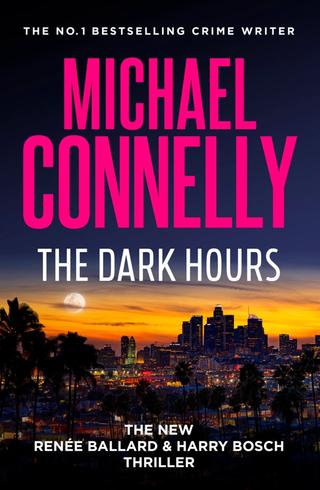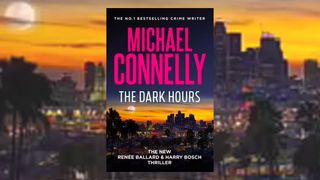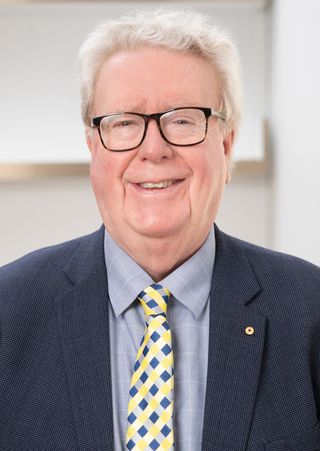New Year’s Eve appears to be a purpose-built gateway for LA crime noir.
James Ellroy achieved this with written blunt force trauma in the opening of The Big Nowhere, beginning with New Year’s Eve in Los Angeles in 1950. Michael Connelly is far more recent, but New Year’s Eve in LA 2019 is no less disquieting.
Detective Renee Ballard is on station underneath the Cahuenga Boulevard overpass with an unimpressive fellow officer, Detective Lisa Moore, who is indifferent to her job and unconcerned about tackling crime seriously.
For this is the LAPD at ebb tide and the tide is still going out.

In The Dark Hours, Michael Connelly’s confronting and lethal new novel, he writes of the realities of policing in Los Angeles:
“The move to defund was turned away by the city’s politicians, but the police department had burned through its budget in dealing with the protests that followed the death of George Floyd at the hands of police in Minneapolis. After weeks of tactical alert and associated costs, the department was out of money and the result was a freeze on hiring, the disbanding of units, and the end of several programs. In effect, the department had been defunded in several key areas.”
The consequence of this harsh reality is that some detectives file paperwork during the morning and conduct basic investigations by phone and computer in the afternoon. They then go home. If they can avoid the streets, they will. Such underachieving police have embraced Raymond Chandler’s observation that “Crime isn’t a disease, it’s a symptom. Cops are like a doctor that gives you aspirin for a brain tumour.”
In a recent interview with The Australian, Michael Connelly drew attention to the challenges facing small police departments clustered around greater Los Angeles. Patrols are seldom undertaken. Police wait in their cars at their precincts for reports of crime.
Los Angeles is always a character in Connelly’s novels, affecting the behaviour of all its characters, but especially the police. LA is a city of intense scrutiny of its guardians and its recorders. So Connelly is meticulous in the accuracy of his novels. Told by a local cop that the expression “perps” (perpetrators) was an East Coast colloquialism, he dropped the term, preferring the LAPD reference to “suspects”.
Despite the real pressures, Detective Renee Ballard remains as dedicated as ever to the pursuit of justice. Ballard is called to a crime scene which is the result of a California tradition of discharging all manner of weapons into the air on the stroke of midnight, New Year’s Eve, sometimes referred to as the “O.K. Corral”. She suspects the death of an Hispanic body shop proprietor in Gower Gulch, Javier Raffa, a retired gangbanger from Las Palmas, is murder and not simply an unfortunate accident. And like her mentor, retired Detective Harry Bosch, Ballard becomes utterly determined to establish the truth.
The Dark Hours navigates along the edge of a sharpened sense of menace originating in the malign and distorted netherworld of contemporary Los Angeles.
Harry Bosch is a character in the background: still focused; still remorseless; and still committed. He now has an advisory role and Ballard is the sharpened, seasoned investigator.
Ballard has many of Bosch’s primary characteristics. She is street-smart and has no time for bureaucratic channels. And like Harry, she can be pugnacious, even with her fellow officers who fall short of her standards, meaning that there are more than a few in the LAPD who make life difficult for her. A relentless work ethic inspires jealousy and criticism rather than admiration. In the course of The Dark Hours, the hostility of at least one of Ballard’s colleagues results in murderous unknown danger emerging.
It is Connelly’s art to draw a line between the death of the body shop owner and a 10-year-old unsolved homicide in which Harry is still immersed. The two painstaking investigations merge. However, Ballard’s real challenge requires a focus upon two appalling tag team rapists called “The Midnight Men”, who brutally assault single women living alone. Connelly writes graphically of the horror:
“The cases were linked by modus operandi, not DNA, because The Midnight Men were careful not to leave DNA behind. Each attack started shortly after midnight and lasted as long as four hours while the predators took turns assaulting women in their own beds, ending the torture by cutting off a large hank of each victim’s hair with the knife that had been held to her throat during the terrifying ordeal.”
The Dark Hours navigates along the edge of a sharpened sense of menace originating in the malign and distorted netherworld of contemporary Los Angeles.
Harry Bosch is evolving into a private detective. Unsurprising perhaps, as one of Connelly’s inspirations is the legendary Raymond Chandler. Regardless of Harry’s future, the impact of The Dark Hours makes it clear that the partnership with Renee Ballard will remain a very formidable and very telling combination.
The Dark Hours by Michael Connelly
Allen & Unwin
400pp






